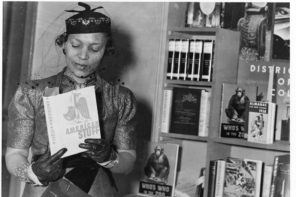Sen. Barack Obama’s landmark speech on race and racism was as much about fear and our ability to overcome it as it was about race and racism itself. He explicitly mentioned fear four times:
Fear is clearly at the heart of racism, but is it learned or innate?
Fear is one of our most basic emotions, wired through one of the most ancient parts of our brains (a part we share even with reptiles), the amygdala. Fear is about survival, which is a good thing: from a simple evolutionary perspective, if we sense and respond quickly to things that might harm us, we can survive longer, be happier, reproduce more. Some argue our inability to explain certain phenomena that induce fear (the sound in the woods with no associated saber-tooth tiger, the death of a loved one) led to early superstitions and belief in “spirits.”
But the most basic, primitive fear is innate and indiscriminate: we’re going to run or fight or protect our children, regardless of the race of the person attacking us.
What then of the fear of black men which Sen. Obama’s white grandmother had? Do we have an innate fear of those from another race? Unlikely. In one intriguing MRI study at UCLA, both white and black participants had more amygdala activity (interpreted as more negative reaction) when viewing black faces than they did when viewing white ones. Presumably, although this is not noted in the study, each study participant grew up with people of their own race. This suggests that these emotional fear responses are learned, because you’d expect differences between blacks and whites if the activity were due only to the lack of familiarity with the “other” race. Or, to put it another way: were we hardwired to fear “other” races, the study would’ve shown that black men fear white men more often, which they didn’t.
So the question becomes: how do we train our amygdala to signal fear of one thing and not the other? That is, how do we learn fear? In humans, in addition to quick links to the amygdala, sensed fears involve many other parts of the brain, including the cortex, the “higher thinking” part of our brains. So, we have that gut-fear reaction, but we also have a chance to modulate, tune and adjust those settings, so to speak. This is key; this is what makes us human, and this modulation is what Sen. Obama is appealing to, both in Tuesday’s speech and in his campaign more generally.
Pavlov and his dogs set the basic fear conditioning paradigm. A neutral stimulus (say, a ringing bell) is provided together with a known aversive stimulus (electric shock), and this results in a conditioned fear response to the previously-neutral stimulus. But this is dogs in a lab.
Out in the world, animals (including humans) have safer, more efficient ways of obtaining and transferring important emotional information. We can talk to someone else, watch television, observe other humans’ facial expressions and reactions to events and experiences. This social, observed public information is powerful stuff—perhaps the very stuff that drives cultural, and in turn, biologic evolution.
Get this: colleagues at Emory University introduced one of two novel techniques for obtaining food to two high-ranking female chimps (unobserved by other chimps) from two different social groups. After the females were reintroduced to their groups, more than 90% of the chimps mastered the technique of their respective high-ranking female. Strikingly, the handful of chimps who on their own discovered the technique not introduced into their group eventually adopted only the technique “their” female had introduced. Complex behavior, conformity, culture.
Learning from looking (or smelling or tasting or, unique to humans, from listening to words), observing and synthesizing “public information,” is one valuable skill. It’s not surprising then that the phenomenon’s been observed in animals from birds to mice, from cows to primates. Such observational learning is especially strong in humans and our close evolutionary relatives, especially with respect to fear. We have exceptionally diverse and flexible muscles in our faces to show emotion, and facial expression serves as a strong stimulus for observational fear-learning in primates.
Sen. Obama talks of those of Rev. Wright’s generation and their “memories of humiliation, doubt, and fear.” We undoubtedly learn fear from watching and listening to others experiencing fear, as well as from watching others fear us. As a kid growing up in the American South, I remember thinking that the local news could have been called “The Crimes Black Men Committed Today.”
Fear-learning is tuned and affected by context and a number of social variables; our knowledge, past experience, and goals, and our relationship to those being observed. In one study, merely being aware that a previously unknown individual was going to be on your team later that day—the least intimate of relationships—increased the strength of the fear you learned from watching that individual experience fear. Not surprisingly, empathy also appears to overlap with and play a role in observational learning.
Racism is fear. Fear is mostly learned and, as Sen. Obama says, can be unlearned, overcome. And as we do this, others watch, and learn. This is the message.




